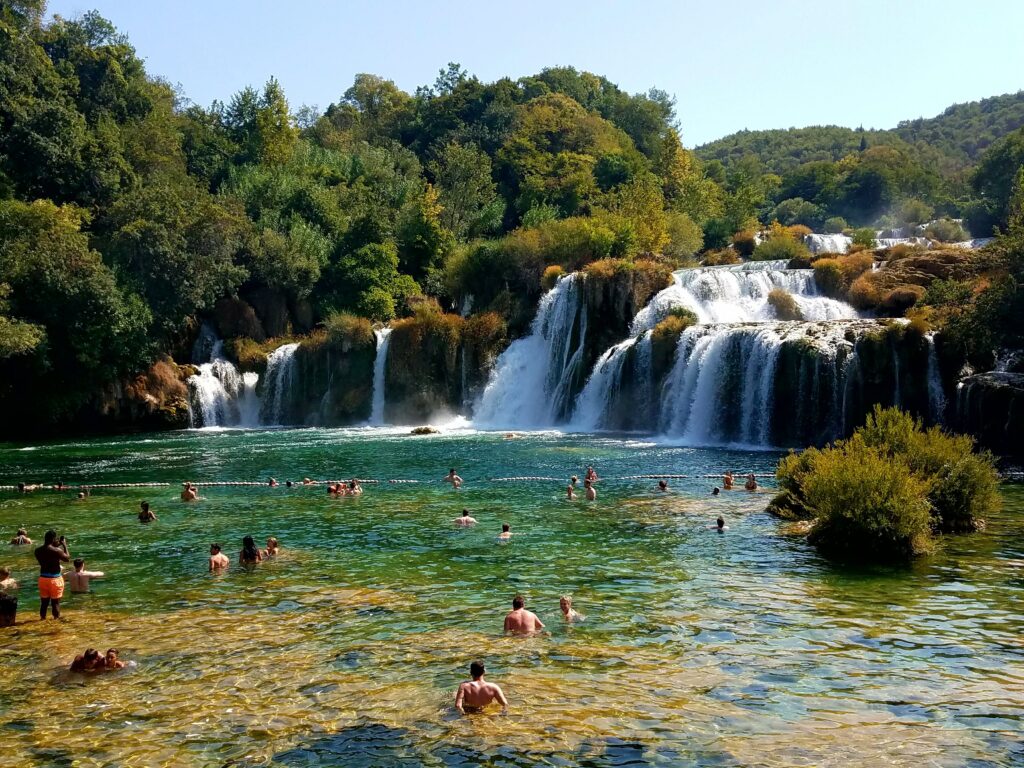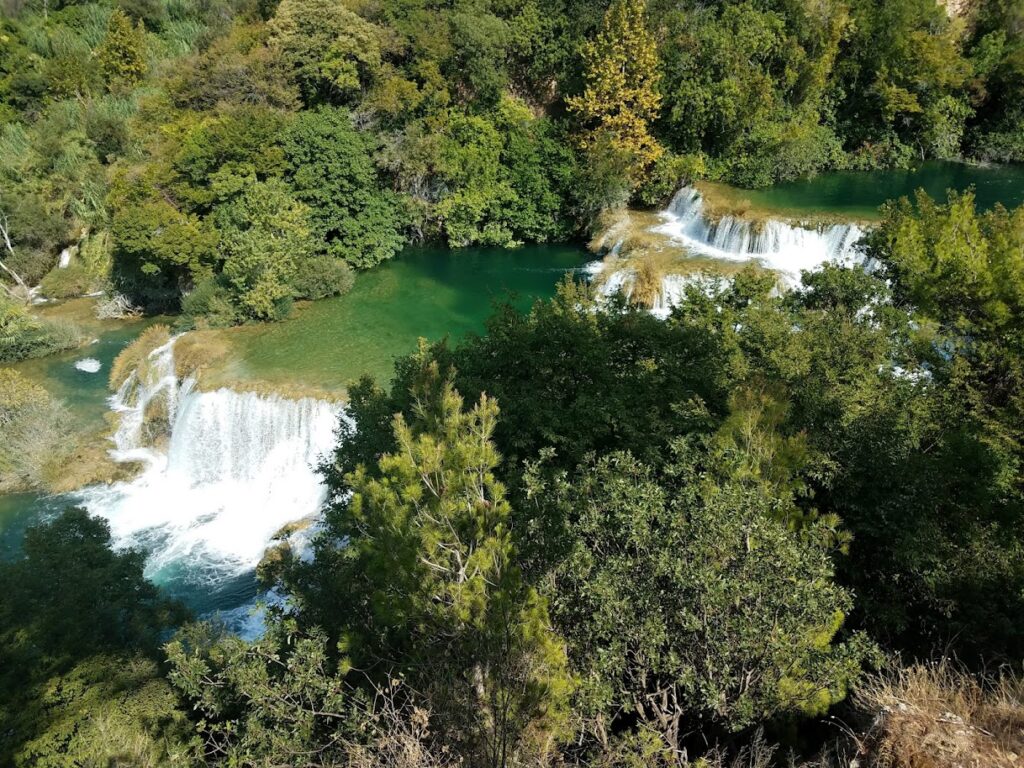Itinerary:
Lake Bled –> Emerald River –> Julian Alps –> Ljubljana –> Plitvice –> Krka –> Trogir –> Mostar –> Split –> Korcula –> Montenegro –> Dubrovnik

Lake Bled
After landing in Zagreb, our first destination was north to Lake Bled, a beautiful destination tucked in the Julian Alps of Slovenia. On the way, we stopped by Skofja Loka and toured some of the top sights of this quiet Medieval town: Church of St Jacob, Skofja Loka castle, and the Capuchin Bridge (famous as the oldest bridge in Slovenia that is still intact). It was the perfect place to walk a few miles and grab a lunch and beer before heading up to Lake Bled.
It is easy to see why Lake Bled has so much appeal as a resort destination. There are well-built biking and hiking trails all around the lake, and numerous hills that can be climbed to get fantastic views of the lake, inner island, and surrounding mountains. The inner island complements the lake’s beauty with its small but picturesque Assumption of Maria Church.
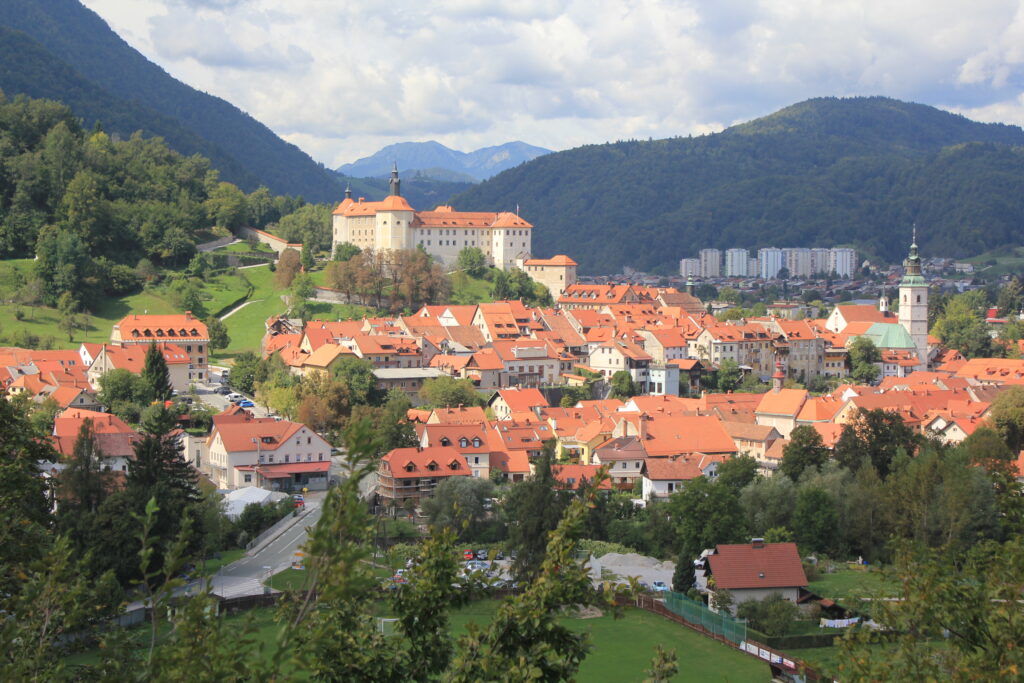
Skofja Loka 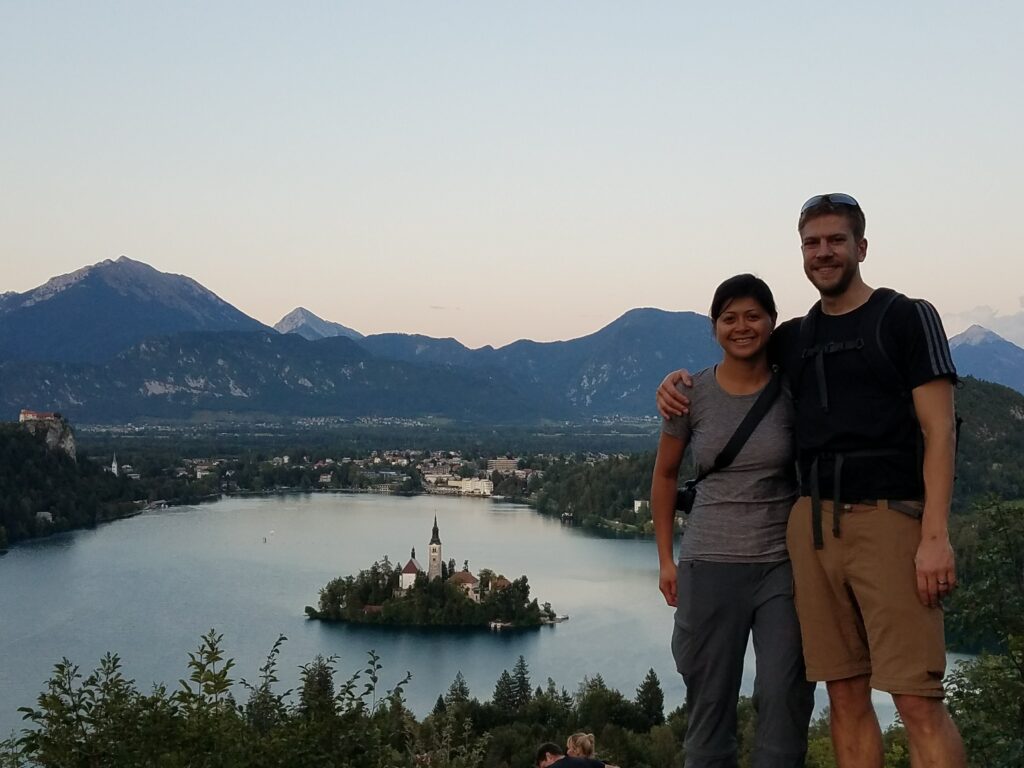
Lake Bled
Julian Alps
The next day we headed up to the Julian Alps for some much-needed mountain time. There are numerous hikes in the area, but we chose to drive up to Vrsic Pass, which looms over the beautiful Soca Valley. Hiking around the Vrsic Pass area was fascinating, as there are a number of old military installations dating back to WW1. The most common lingering features were concrete buildings reminiscent of the Hawaiian “pillboxes”, used as observation points to other areas in the mountains. It was sobering to think of those who were forced to battle in the mountains, especially throughout the winter blizzard conditions – a far cry from the beautiful September weather we had during our hike.
Ljubljana
We spent the next several nights in Ljubljana, doing various day trips from there. This may be one of the most pleasant cities I have ever walked around in! Strolling around between some of the different sights at night, and walking back to the hotel, I never at any moment felt unsafe. For the largest city in Slovenia, it was also incredibly clean. Most of the main sights–particularly Dragon Bridge and the Ljubljana Castle– are within a couple miles of each other, and the central part of the city is devoid of modern high-rise buildings.

City view from Ljubljana Castle
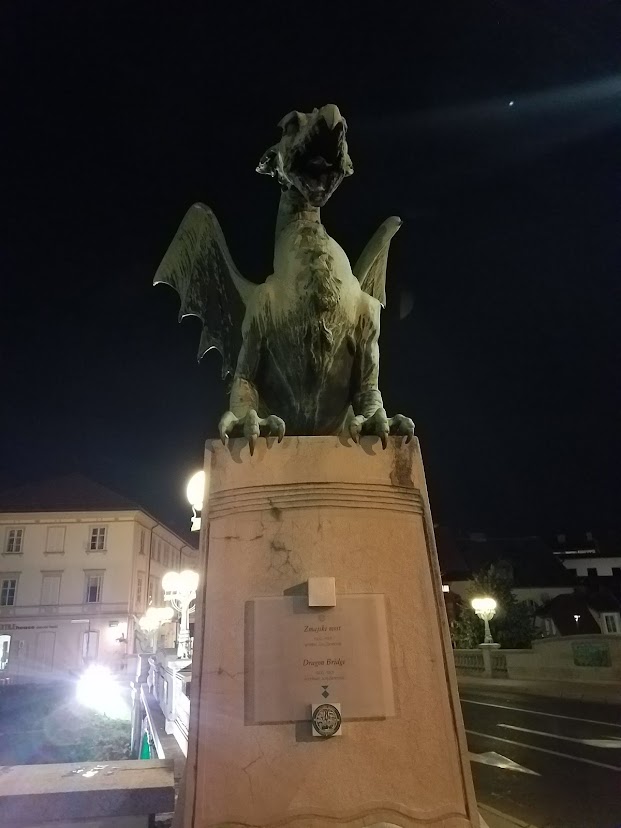
Plitvice Lakes National Park
From Ljubljana we next headed down to Croatia, first visiting the Plitvice Lakes National Park. This ecological wonder comprises 16 different turquoise lakes at staggered elevations and often separated by dramatic waterfalls. Most of the lakes can be crossed on wooden bridges, allowing for a close-up view of the various falls. Hikes abound, but we found it best to just completely circumnavigate the main lakes in a clockwise loop.
Krka
In contrast to Plitvice, Krka is really about one main waterfall feature, but it is impressive. Being a bit less tucked into the mountains, the weather (and water) was warmer, making it a really nice place to swim around and cool off in front of the falls. There is a historical aspect to this area, with well-preserved water mills dotting the Krka River. Many date from the Middle Ages, and were used to mill wheat for distribution throughout the area.
Split
After playing around at the national parks, we split for Split, which has to be one of the most unique cities I have ever experienced. There are a lot of cities in Europe with Roman-era ruins – but not where the the ancient Roman walls, Medieval chapels, and modern-day buildings all coalesce together in one cohesive structural unit.
As to where there are such impressively built Roman ruins on the Croatian coast? In the fourth century, the emperor Diocletian basically built this up as a “palace”, but more like a fortified retirement home, replete with a military garrison for protection.
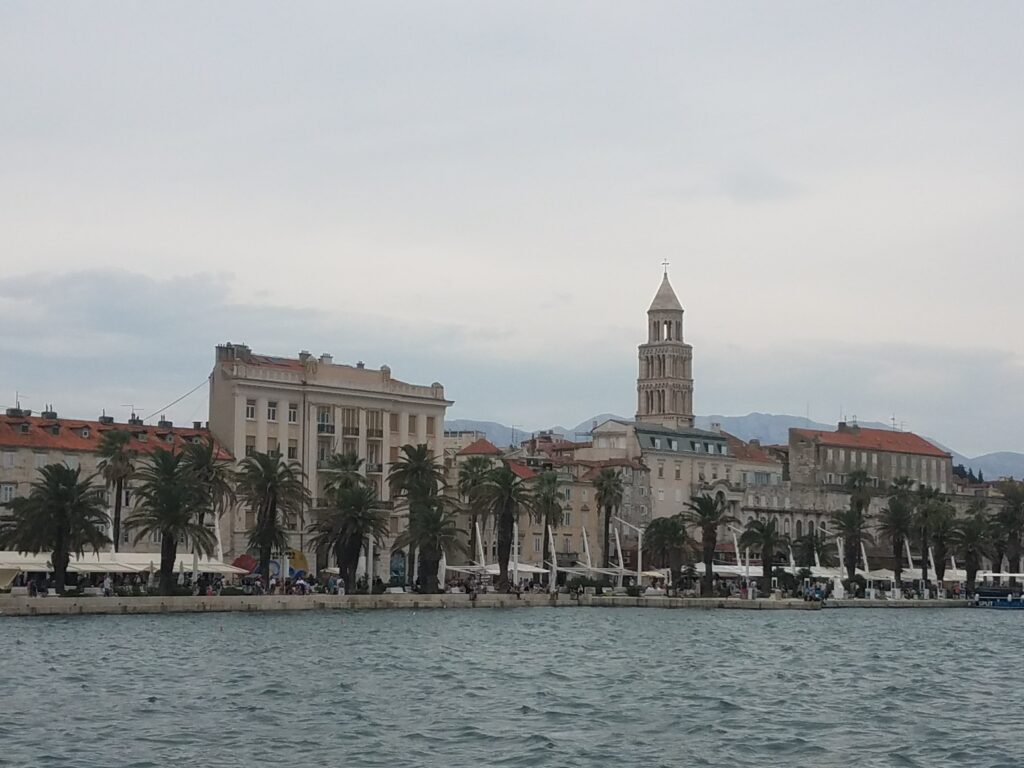

Inside Diocletian’s Palace
Trogir
Less than 10 miles away from Split lies Trogir, a tiny island with a big history. Only about 500 meters long by 100 meters wide, the island nevertheless has been used throughout history as a center for trade, and at times, a refuge during land invasions – most notably during the Mongol invasions of the 13th century.
Throughout the Middle Ages it was a common trading outpost with Venice, but in the 15th century, it became a Venetian subject, which is evident by the Venetian architecture (and winged lions) noticeable throughout the island. A great walking city-island that is an easy (and cheap!) day trip from Split.

Mostar
Another easy doable day trip from Split is Mostar, a Bosnian city with strong Ottoman influences. The clear highlight of the city is the Stari Most, or “Old Bridge”, an expansive landmark dating back to the 16th century. In fact, the name “Mostar” itself is named after the guards of the bridge.
With its different influences, Mostar definitely had a unique vibe. Small markets, resembling Moroccan souks, dotted the city, offering plenty of options for souvenirs. The food was noticeably more Turkish, and I had to try to national dish, Cevapi, which consisted of a meat kebab with onion with a bonus fried egg on top.
The bridge itself is a great place to stroll and people-watch, especially when locals demonstrate their diving skills by jumping from the 110-foot crown. It is common for divers to have a bowl out and tourists to drop in a couple euros, and once enough money is collected, they go for it. Upon hearing about this tradition, I thought for a split second that I might like to try it, but the height is about twice as much as I’ve ever jumped – so I was happy to watch.
On a more somber note, there was much more evidence of the devastation that resulted from the aftermath of the breakup of Yugoslavia in the 1990s. Many buildings still had bullet holes visible on the facade, and there were several cemeteries throughout the town that were clearly set up as a result of the war: tombstones all with ages in their 20s and 30s, with some people as young as 18.

Korcula
Korcula is another Dalmatian island with strong ties to Venice- it was a Venetian trading vassal for the same time period as Trogir. On the September day we visited, it offered everything we needed for a relaxing stay – perfect weather, beautiful sand beaches and ocean water, and lazy roads connecting various parts of the island.
While my first thought was to rent a scooter and stop by the various spots on the island, I was convinced to try out an ebike for the first time – and I was hooked! With the ebike helping us get on cheat mode, we were able to visit beaches and beautiful harbor coves.

Mexico? No – Korcula! 
Bay of Kotor, Montenegro
Although we next drove south to Dubrovnik for the night, the next day we booked a tour to Montenegro, only about 2 hours south of Dubrovnik. On the trip down, we stopped by both the town of Perast and the Old Town of Kotor, nestled in the Bay of Kotor. The topography here is reminiscent of somewhere like Reno, with dark, rugged mountains surrounding the small towns in all directions – but in this case, the buildings snug up right to the base of the mountains, in some cases weaving their way up to high points. There are nice little doses of history unveiled along the way, such as the Venetian development and fortification of Kotor and the undersea caves that Austro-Hungarian submarines hid in during the first world war.

Overlooking the Kotor Old Town 
Dubrovnik
Our final stop was the magnificently preserved Medieval walled down of Dubrovnik, the “Pearl of the Adriatic”, and a perfect encapsulation of what an independent city-state was like. Although an overall small city, there are endless things to do in the nearby area, such as circling the city by kayak (or jetski), cliff jumping below the walls, or hiking up nearby Mt Srd to get an incredible eagle-eye view of the city. A great evening experience was just circling around the city walls, taking in the views from every corner, and then heading down to one of the local bars.
In addition to the outdoor experiences, a highlight inside the city is a museum dedicated to the struggles during the Yugoslav War. Dubrovnik, in particular, experienced significant bombing in 1991 from Serbian forces. On the tranquil days we were there, watching the summer sun glimmer off the sea, it was difficult to imagine the devastation that took place there, but I appreciated the ability to somewhat see it through the eyes of the civilians that had to live through it.

On the city walls 
Opposite the small bay 
View from Mt Srd
All in all? An amazing way to spend several weeks. If I were ever able to visit the area again, I think I would like to do some more hiking in the Slovenian national park, and possibly summit Mt Triglav. And although we visited several beautiful Croatian islands, there are still many more – Vis, Lopud, Mljet – that would be amazing to visit.




